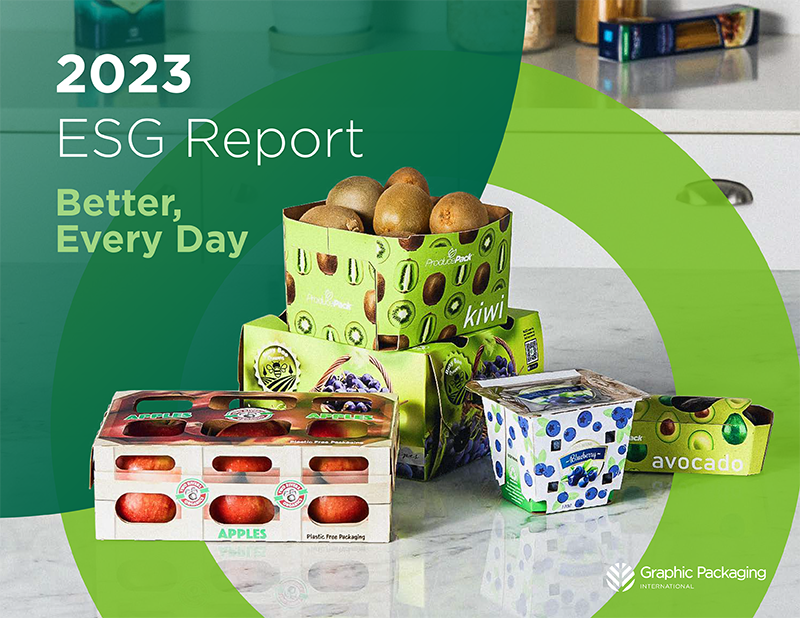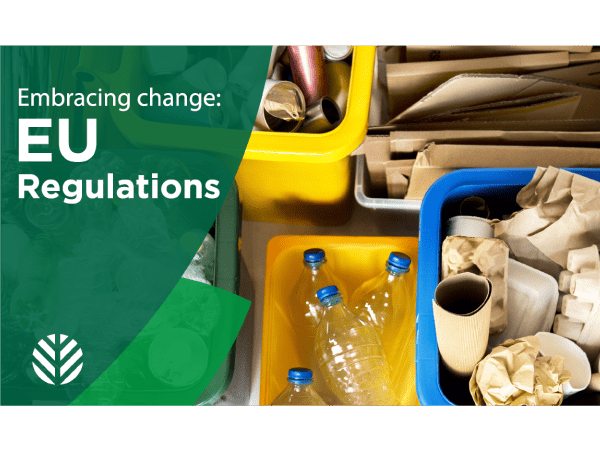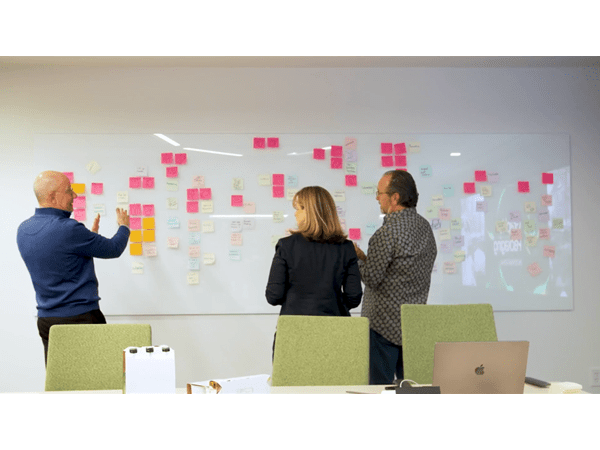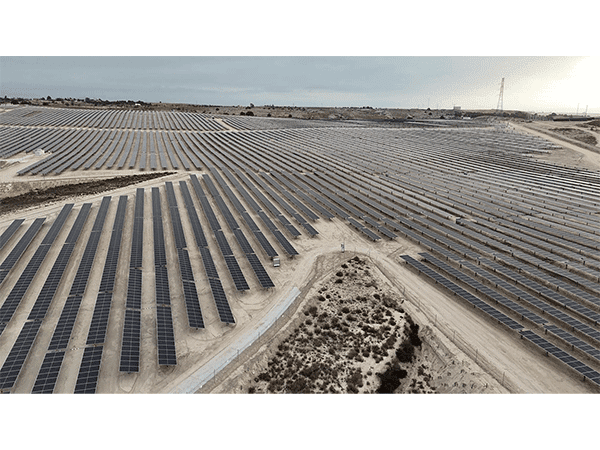Inside Our ESG Report: Sustainability Trends Informing Our ‘Better, Every Day’ Strategy
August 13, 2024

Population growth, resource scarcity, climate change, and evolving threats to natural ecosystems. These challenges are juxtaposed against a growing and fast-moving society that thrives on conveniences, embedded throughout daily routines. Packaging plays a key role enabling these routines. That’s why our industry is driven to pursue more circular packaging innovations that prioritize renewable, recycled and sustainably-sourced materials, and consider product end of life.
With these challenges in mind, Graphic Packaging International launched our Vision 2030 business strategy in early 2024. Our sustainability vision, outlined in our 2023 ESG Report, highlights how we’re investing in more circular innovative paperboard consumer packaging, supporting a safe and inclusive culture and acting as stewards of our planet.
Our Sustainability Promise: Better, Every Day
As an extension of our Vision 2030, we also refined our sustainability promise this year and established new goals to become Better, Every Day. These goals focus our actions in three strategic areas: creating Better Packaging, doing Better for People, and shaping a Better Future for our planet. These three strategic areas are informed by and respond to key global sustainability trends.
Supporting the Shifting Conversation towards Better Packaging and a Circular Economy
Around the world, urban growth is driving change. According to Karen Seto of the Yale School of the Environment, urban areas contribute up to 75% of global greenhouse gas emissions. By 2050, these urban centers are expected to either double or triple in size.
As global populations expand, we see a simultaneous and growing demand for manufactured goods in a world already struggling to combat resource scarcity and ballooning waste. Despite ongoing regulatory initiatives and corporate pledges to reduce plastic waste, the SustainAbility Institute’s 2024 Trends Report found that single-use plastic production rose by six million tons globally between 2019 and 2021.
Taken together, these trends make it increasingly clear that a transition to a circular economy is necessary if we want to maintain modern lifestyles. The packaging industry particularly must pursue circularity and develop better alternatives to single-use plastic. Graphic Packaging is working to make every one of our paperboard packaging innovations more circular, more functional, and more convenient than existing packaging alternatives. We look to optimize circularity at each stage of the consumer packaging lifecycle, using Design for Environment (DfE) principles to help us consider — and reduce — a package’s climate and environmental impacts throughout its lifecycle. Leveraging DfE, we aim to better position our products to meet increasingly demanding packaging regulations for reuse, recycling, and composting. We routinely review and assess our packaging’s recyclability, and we pursue projects to improve packaging recyclability to support higher recovery rates and drive circularity.
We also seek opportunities to creatively recover and recycle materials, including repurposing both pre- and post-consumer wastepaper and our own paperboard waste as raw materials. In 2023, more than 50% of the paper feedstocks used by our recycled paperboard manufacturing facilities were from recovered post-consumer materials, and 74% of our paperboard packaging contained some recycled content. Internally, we recovered and recycled 1.1 million metric tons of waste materials from our packaging plants and paperboard manufacturing facilities, including 98% of our paperboard waste. Where materials cannot be recovered and reused, we strive to improve product design and manufacturing processes to eliminate waste altogether.
Read more in the 2023 ESG Report: Our Better Packaging Topics
Striving for Safer, More Equitable Work Environments that are Better for People
Attracting and retaining talented individuals continues to be a challenge for manufacturers across industries. In August 2023, 2.3% of the total U.S. workforce resigned from their jobs, just below 2019’s highest reported monthly rate of 2.4% as noted by Employ America. Gallup’s State of the Global Workplace analysis also found more than 50% of employees were actively or passively job seeking that year. Globally, nearly 60% of employees report feeling disengaged at work—threatening individual company performance and costing the global economy an estimated $8.8 trillion according to Gallup’s State of the Global Workplace.
Rising disengagement, coupled with workers reporting increased feelings of burnout at higher rates than seen during the COVID-19 pandemic, can directly impact manufacturers and raise concerns about employee safety on site. Accordingly, Graphic Packaging has placed renewed importance on maintaining employee safety, which allows us to promote health and wellness while managing risks and ensuring high quality work.
We strive for zero serious injuries and fatalities, or LIFE injuries. In 2023, we achieved zero total injuries at 32 of our manufacturing locations and a global lost time incident rate (LTIR) of just 0.31 — 69% below the average paperboard and packaging industry LTIR reported by the U.S. Bureau of Labor Statics (2022). As we work towards our goal of zero LIFE injuries, we continue to implement global Safety Leadership training, Hazard Recognition, Evaluation, and Control workshops, and Health, Safety, and Environmental continuous improvement plans.
We’re also prioritizing work environments that are intentionally designed to foster our employees’ growth and sense of belonging. In 2023, we invested in Diversity, Equity & Inclusion by establishing DEI @ GPI, a long-term roadmap and strategy that articulates how we integrate DEI into our leadership commitment, employee engagement, talent management, education and communication, and suppliers and community. We trained vice president leaders and above on this strategy, and plan to expand this training in the coming year. Our efforts are already delivering results with year-over-year increases in both global gender diversity and U.S. workforce ethnic diversity. Our current employee demographics for these groups exceed U.S. Bureau of Labor Statistics (BLS) 2023 industry benchmarks for gender by 27% and ethnic diversity by more than 2 times.
Read more in the 2023 ESG Report: Our Social Topics
Sustainable Operations for a Better Future
A warming planet is driving society to take seriously the need to reduce greenhouse gas (GHG) emissions and address climate change. In January 2024, The New York Times reported that 2023 was the warmest year on record — with seven consecutive months of record-breaking temperatures, lasting June to December. Following these trends, researchers concluded that at present rates global warming is on track to surpass the Paris Agreement’s 1.5 degree C threshold. The urgency spurred by extreme weather events also spurred activists around the world, resulting in an onslaught of organized protests, as well as climate liability lawsuits and subsequent, major court wins.
The packaging sector can support the transition to a low carbon economy by meeting increased demand for recyclable packaging that is made using renewable, non-fossil-based materials and energy. At Graphic Packaging, we’re taking it a step further — working to shape a better future for our planet by reducing our carbon footprint and protecting valuable forest ecosystems.
We’re setting out to achieve Net Zero Greenhouse Gas emissions by 2050, in accordance with the goals of the Paris Agreement and UN Sustainable Development Goal 13. As a first step in this journey, we set and validated 1.5°C aligned near-term science-based targets through the Science Based Targets initiative (SBTi) in 2023. We have a defined path to deliver the SBTs, placing us on a path to reach Net Zero emissions by 2050. In the meantime, we’re also working on achieving near-term targets through actions like our renewable electricity virtual power purchase agreement (vPPA) in Europe. The vPPA is designed to add renewable electricity to the European power grid and advances our commitment to reduce greenhouse gas emissions.
In addition to reducing our greenhouse gas emissions to create better packaging with a lower carbon footprint, we must also work to ensure the wood fibers we use are responsibly sourced. Practices like sustainable forest management and conscious wood harvesting must become the norm, particularly as society increasingly relies on global forests to produce everything from food to energy to paperboard while simultaneously serving as key carbon sinks that help mitigate climate change.
We’re working towards a better future by paying special attention to where we source our materials. Our goal is to ensure that 100% of purchased forest products are sustainably sourced by 2030 — and, in 2023, we achieved 89%.
Read more in the 2023 ESG Report: Our Environmental Topics
Through creating Better Packaging, doing Better for People, and shaping a Better Future for our planet, Graphic Packaging is committed to addressing the challenges of the modern world.
Stay tuned to Graphic Packaging’s newsroom, where we’ll continue to share our point of view on global sustainability trends and issues as we work to become Better, Every Day.


